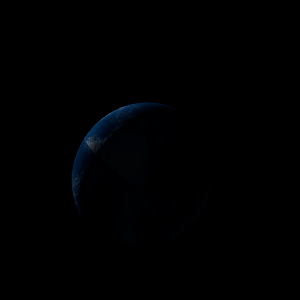|
|
Space Astro
|
Info for exoplanet "Oukwangk"
| Scientific (actual) data |
|---|
| Planet | GJ 176 c |
| Planet status | Confirmed |
| Mass sini | 0.0233 |
| Orbital period | 28.586 |
| Semi major axis | 0.146 |
| Orbit eccentricity | 0.02 |
| Angular distance | 0.019108 |
| Discovered | 2009 |
| Updated | 2019-06-14 |
| Tzero vr | 2454290 |
| K | 2.43 |
| Publication | Published in a refereed paper |
| Detection type | Radial Velocity |
| Mass detection type | Radial Velocity |
| Star name | GJ 176 |
| Right ascension | 70.73° |
| Declination | 18.96° |
| Mag v | 9.97 |
| Mag j | 6.462 |
| Mag h | 5.824 |
| Mag k | 5.607 |
| Star distance | 9.42 |
| Star metallicity | -0.1 |
| Star mass | 0.49 |
| Star radius | 0.53 |
| Star sp type | M2.5V |
| Wikipedia article | GJ 176 c |
Back
| |
| Fictional info (?) |
|---|
| Suggested name | Oukwangk |
| Planet type | Cold planet |
| It is the coldest planetary atmosphere in its solar system, with a minimum temperature of 40°K (-233°C), and has a complex, layered cloud structure with ozone thought to make up the lowest clouds, and hydrogen deuteride (HD) the uppermost layer of clouds. The planet is named after the deity Oukwangk, the messenger of chaos.
As seen relative to the fixed stars, it rotates on its axis exactly four times for every three revolutions it makes around GJ 176.
The rotational period and seasonal cycles of Oukwangk are likewise similar to those of Earth, as is the tilt that produces the seasons. Oukwangk is the site of Robusto Montanus, the tallest volcano and second-highest known mountain in its solar system, and of Valles Marineris, one of the largest canyons in its solar system.
Oukwangk is primarily composed of hydrogen deuteride (HD) with a significant part of its mass being ozone, though ozone comprises only about a small fraction of the number of molecules. A prominent result is the "great white spot", a giant storm that is known to have existed for centuries since it was first detected by scanner.
Oukwangk has been explored on several occasions by robotic spacecraft, most notably during the early Pioneer and Wayfinder flyby missions and later by the Hawking orbiter.
Observations from Earth have shown seasonal change and increased weather activity as Oukwangk approached its equinox 8 years ago. |
| Atmosphere | Hydrogen deuteride (HD) | 59% |
| Ozone | 29% |
| Carbonyl sulfide | 7.5% |
| Helium | 3.6% |
| Carbon monoxide | 0.46% |
| Nitric oxide | 0.0099% |
| Water vapor | 0.00086% |
| Atmospheric pressure | 15 bar |
 |
| No known satellites |
| Google search for Oukwangk |
|
Website by Joachim Michaelis
|
|
|
|